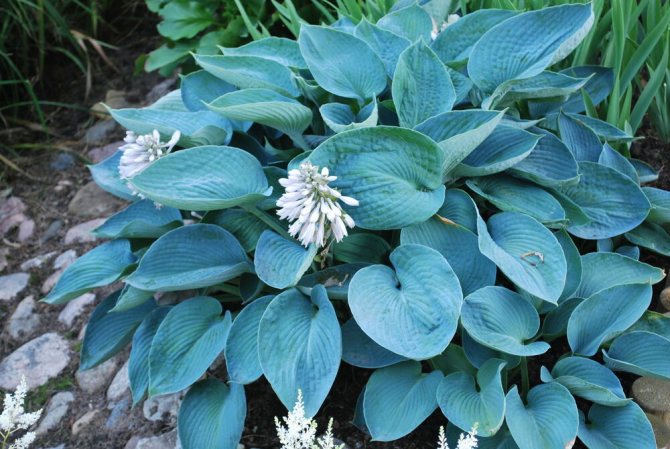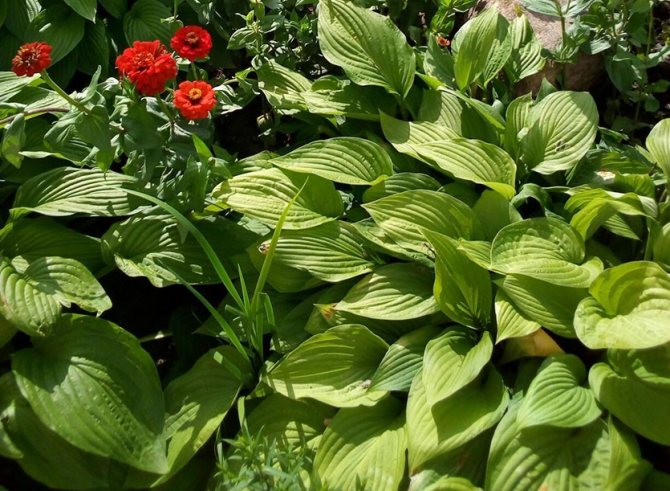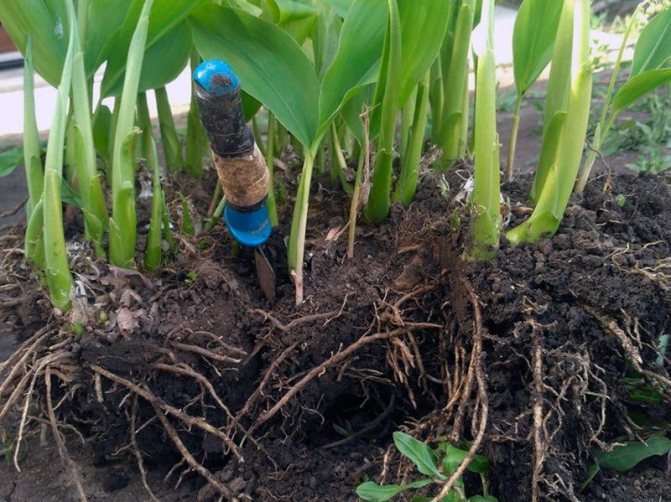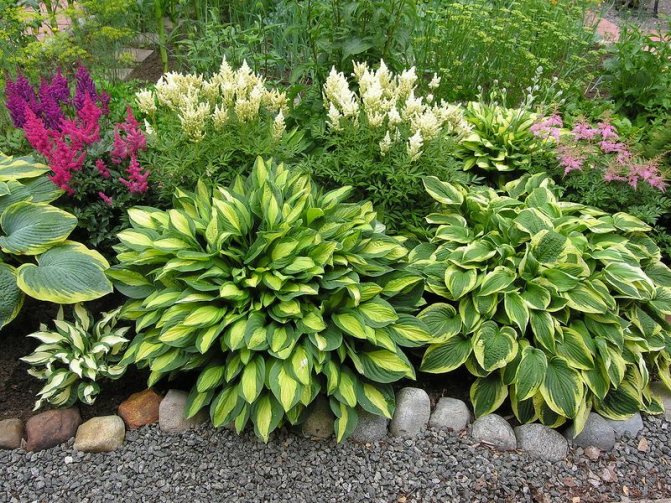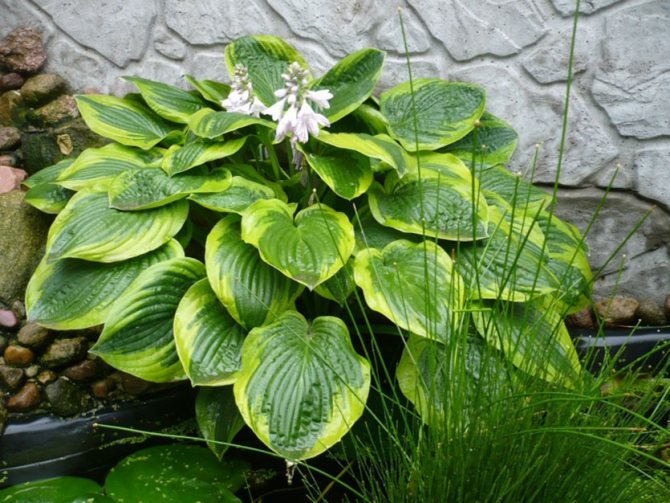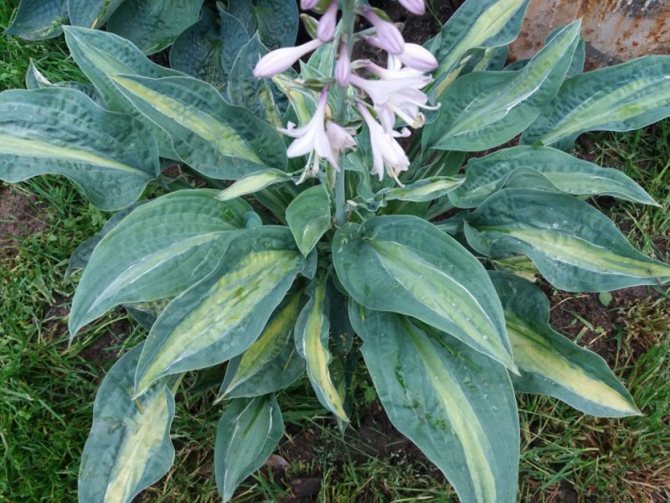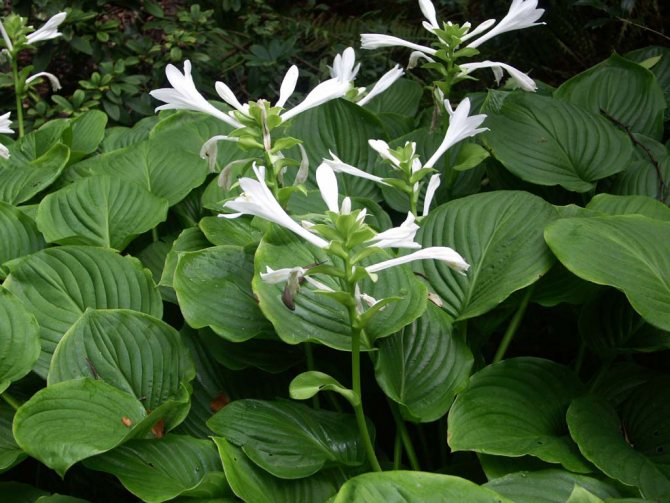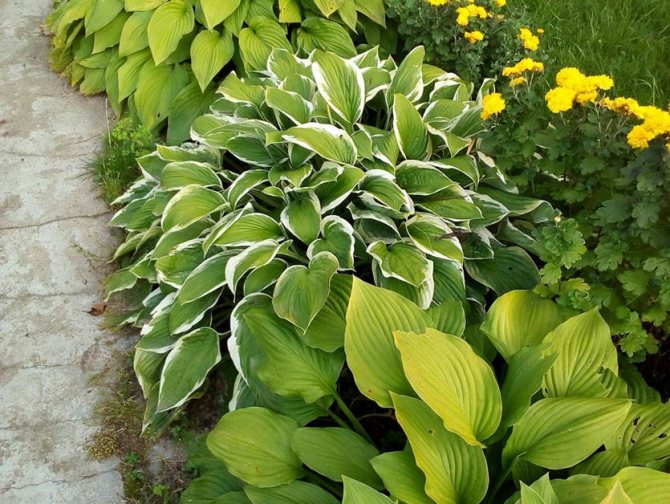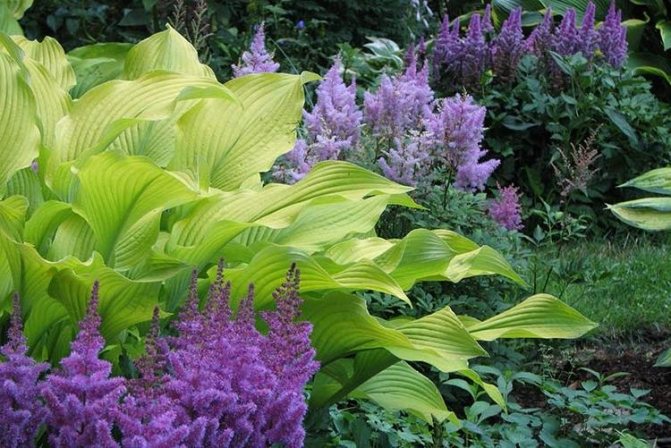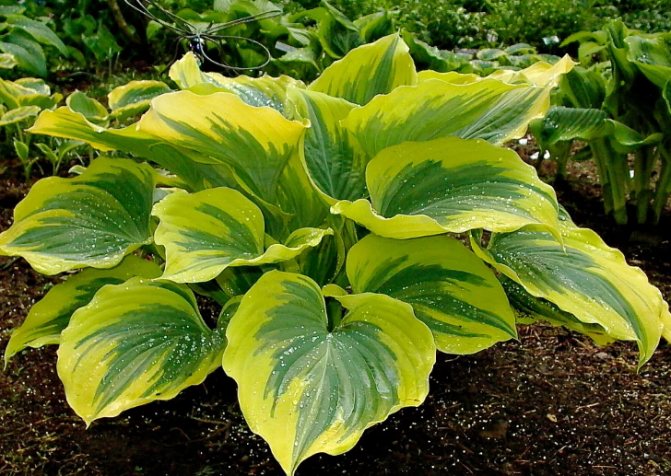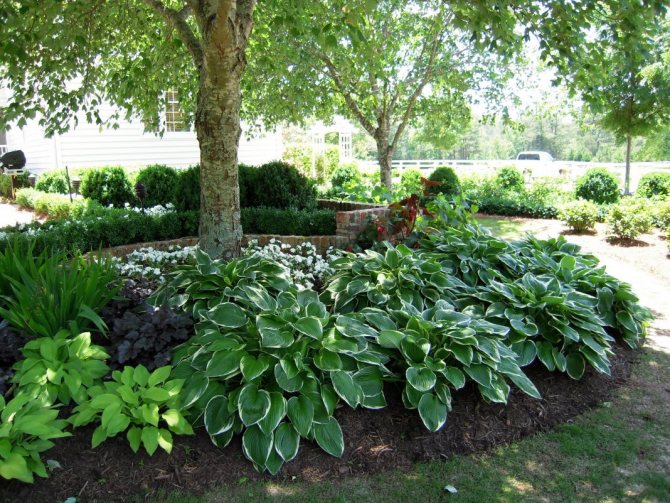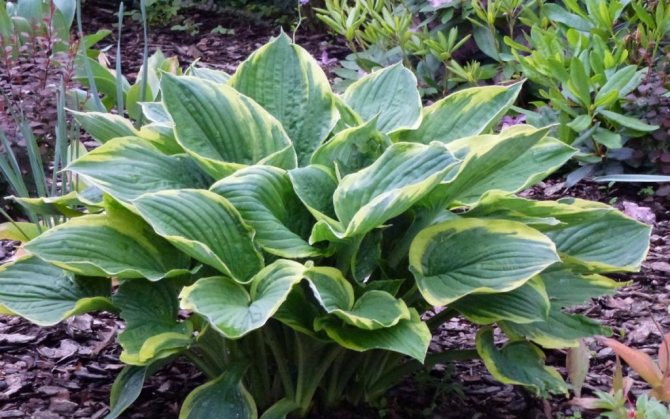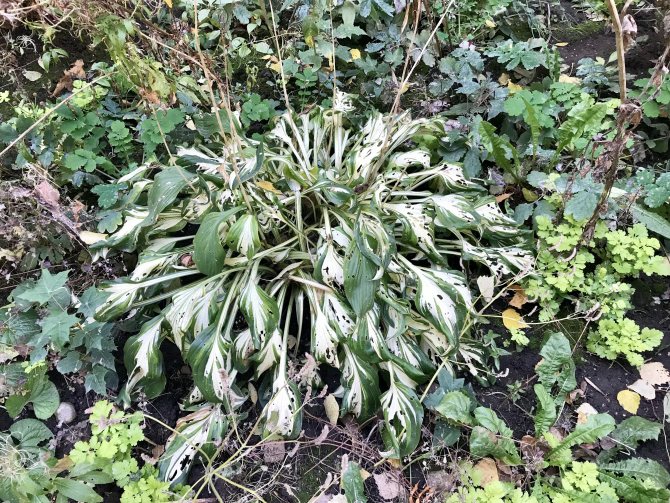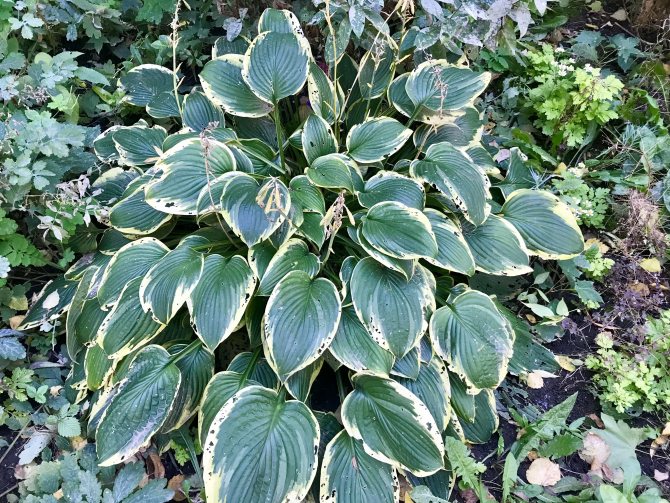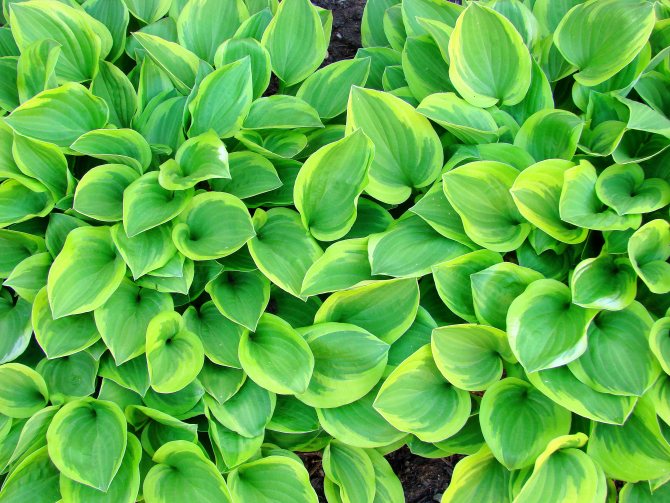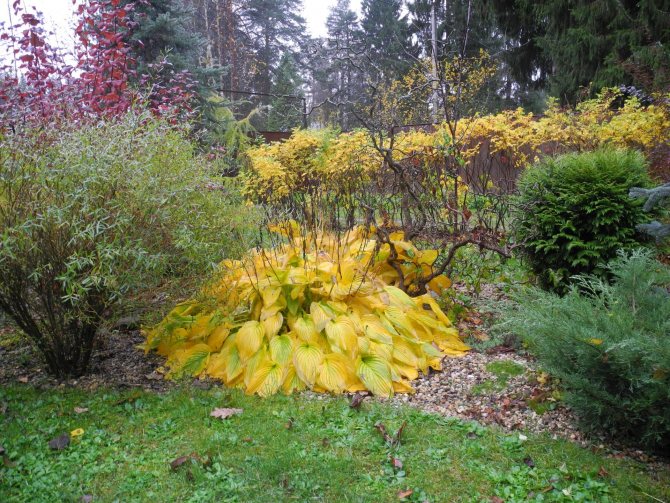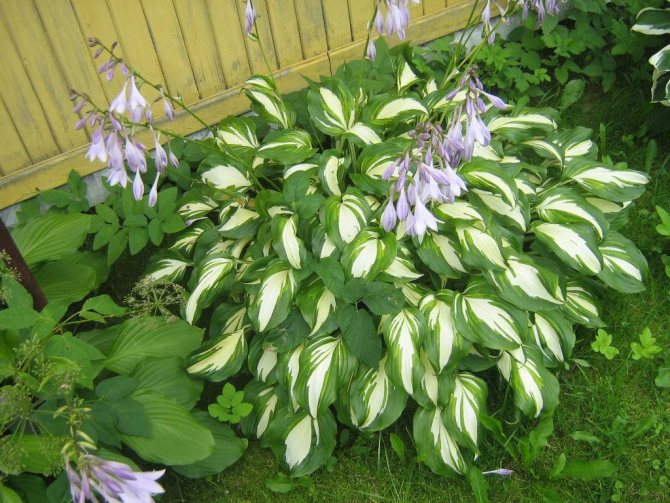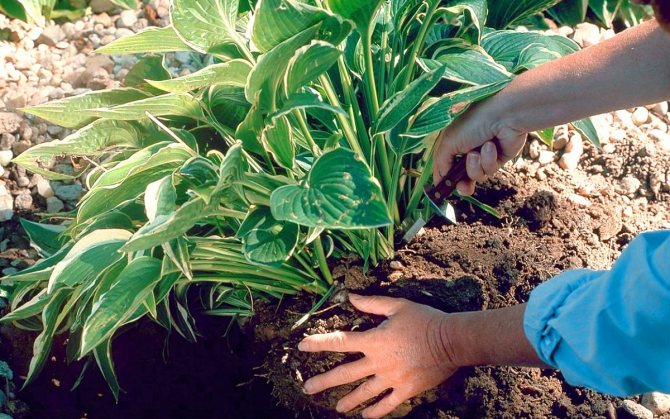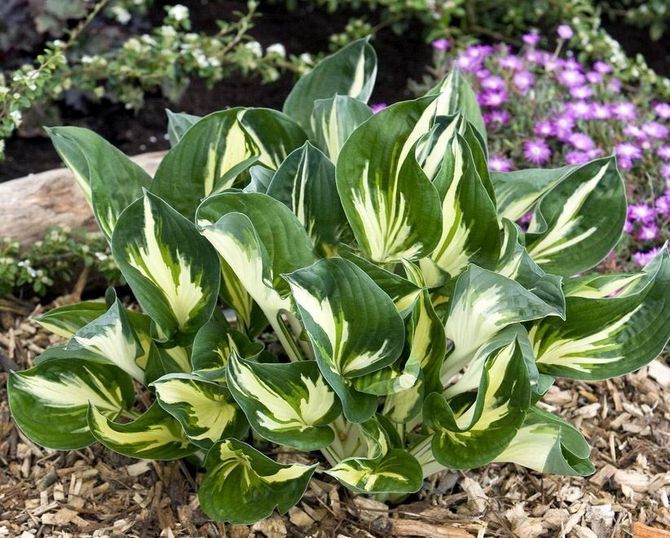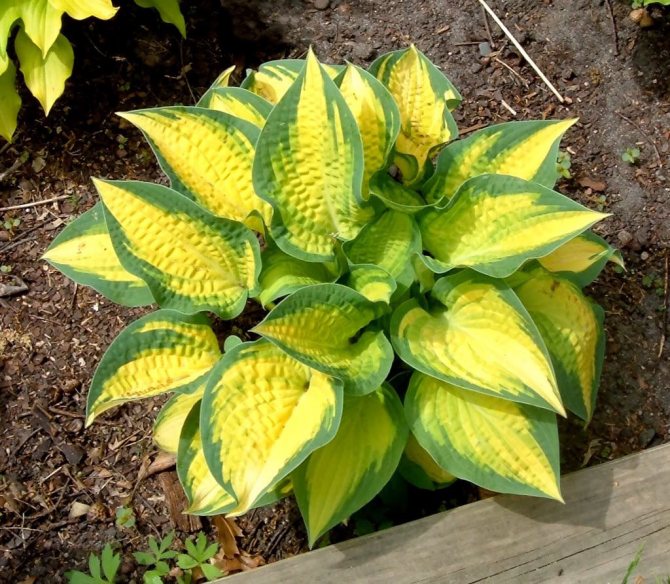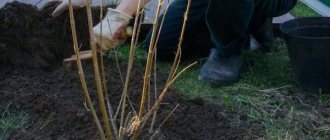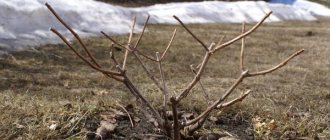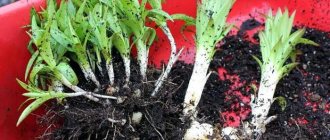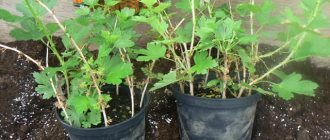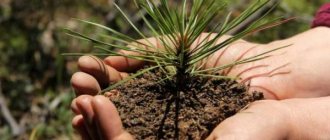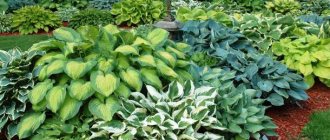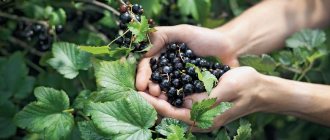Hostas (Latin name of the genus - Hosta) are very popular ornamental plants that can grow well in deep shade, where most other plants do not feel well. Numerous host varieties with different sizes and colors of leaves will decorate the shady corners of your garden. Hosts are decorative precisely for their foliage, and their flowers are small and not so spectacular. In order for the hosta to be lush and bright, it needs a lot of nitrogen, and therefore, it needs fertilizing with organic fertilizers in spring and early summer. The large foliage surface evaporates a lot of moisture, so during hot weather the hosts need watering. Let's talk further about the autumn division of the host and preparing them for winter.
When can a host be transplanted
The host can be transplanted throughout the season, but the best transplant is in early spring, from late April to late May, when young leaves begin to appear on the plant and new roots grow, or from late August to late September: the transplanted rosettes should have time to take root before the onset cold weather. It is undesirable to transplant weak plants at the end of summer; it is better to postpone the procedure until spring.
Correct transplant hosts
The time of transplanting a host depends on the species to which it belongs: some plants are best transplanted in the fall, for example, the hosts of Zimbold, Tokudama and hybrids created on their basis. The reason that autumn planting is preferable to spring planting is that these plants do not grow roots in spring.
The transplant becomes advisable if the hosta grows in one place for 4-6 years: too young plants will adapt for a long time after transplanting, and their development may freeze for two years, and those over 6 years old are already difficult to dig out without damaging the root system. To carry out the procedure with the least harm to the plant, choose a dry, cloudy day.
Agrotechnics
A favorable period for planting hosts is the beginning of spring. At this time, the frosts have already passed, and the plant will have time to take root before the summer heat.
Hosts care and cultivation should not be too difficult. Further, their main stages are considered.
A partially shaded area of the garden should be chosen as the landing site. Such places can be under trees or near tall plants. An adult hosta should be in the shade, so when choosing a place, you should take into account how tall the flower will grow. All hosts, without exception, love moist soil. You should also make sure the plant is protected from strong winds.
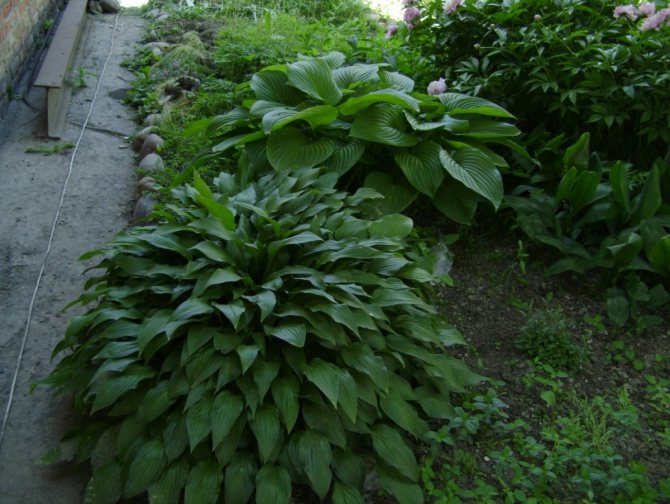
Hosts
Hosta is an unpretentious plant that grows in regions with a wide variety of climates. The most favorable soil for planting is slightly acidic and always moist. Preparing the soil before planting seedlings in the ground consists in loosening 30 centimeters in depth and adding compost to enrich the soil.
The seedling holes should be of the following parameters: depth equal to the size of the root, twice as wide as the root ball. The distance between flowers is chosen according to the variety. This parameter depends on how much the bush grows, and varies from 30 to 120 centimeters. Next, the host is placed in the hole, so that the top of the root is flush with the ground.Cover the root with soil and press well around the base. After planting, the plant needs to be watered abundantly.
Where is better to transplant to the host
When choosing a site for a hosta, you need to take into account that it is not only a shade-tolerant, but also a shade-loving plant, although today many varieties have been bred that develop well in open sunny areas.
For hybrid hosts, the best location would be an area with only sun until noon.
It should be borne in mind that hosts with green leaves are less photophilous than variegated varieties, and plants with blue foliage, preferring partial shade, turn green in the bright sun or in the shade. Cultivars with golden, yellow and white leaves should receive direct sunlight only in the morning or evening. Hosts with dense leathery leaves are much more tolerant of sunlight than species and varieties with delicate and thin foliage, which are best planted where the sun shines for no more than 4 hours a day.
Hosta plant care and reproduction
Breeding a host is possible in the following ways: dividing the bush, cuttings, growing from seeds and vegetatively.
Do I need to cut flowers from the hosta
The division of the bush is carried out in late spring or late summer. The growth period depends on the size. If you separate a small part from the bush, then more time is needed for growth.
The vegetative propagation method is the most effective for the host. This method allows plants to reproduce much faster than other methods. It is used on an industrial scale. The essence of the method is to grow a plant in a test tube.
Seed propagation is the most difficult way. This process is laborious and time consuming. How to grow hosta from seeds? Planting seeds should be in April. Germination rate is 70%. To increase germination, the following conditions must be observed. Before sowing seeds, they are treated with a growth stimulant. The soil and containers for planting must be disinfected. For this, potassium permanganate or alcohol is used. Drainage is poured at the bottom of the tank, then soil. Moisten the soil well and plant seeds. Cover the top of the container with foil. The place is chosen in the shade with a temperature of + 18-25 degrees. Seedlings will appear after two to three weeks. Seedlings are watered moderately. Place containers in a well-lit area, but not in direct sunlight.
It should be planted after the appearance of the first pair of leaves. In new containers, a quarter of the soil should be sand. The sprouts should be hardened by removing the film for a while. After a week, the film is removed completely. When the air temperature outside the window begins to warm up to +18, then the seedlings need to be taken out to the garden for a short time.
The method of propagation with the help of cuttings is to separate the sprout with the root from the adult plant. The bush can be propagated by cuttings in both spring and summer. With this method, the planting material is immediately ready for planting.
Soil for hosts
The hosta is unassuming to the composition of the soil, but on some soils it grows better, on others worse. For example, when grown in a sandy soil poor in nutrition, which also does not retain moisture well, the hosta leaves become small, and it gradually withers, and in clay soil, on the contrary, water stagnates, and this leads to decay of the root system.
The optimal soil for the hosta is a humus-rich loam with a pH of 6.5-7.5, but you can also grow it on other soil. The main thing is that it is nutritious, moist and drained.
Choosing a landing site for hosts
Before transplanting, hosts need to carefully choose a suitable place for it. Hosta is a shade-loving plant. In the wild, it grows in wet meadows and river floodplains. Thanks to the efforts of breeders, many hybrids have been bred that grow in areas sufficiently illuminated by the sun.It is usually recommended to choose a place for the bush that is illuminated by the sun in the morning.
Varieties with green leaves tolerate shading well, while varieties with variegated colors are more demanding on sunlight. So, plants with blue foliage love partial shade, and in the bright sun or in a dark corner of the garden they change their color to green. Hosts with yellow, white and golden leaves love sunlight for several hours in the morning and evening.
Plants with dense, leathery foliage perfectly tolerate the sun's rays, and hosts with delicate thin leaves will be more comfortable in areas where the sun shines no more than 5 hours a day. Therefore, when transplanting, it is very important to choose the optimal place that takes into account all the requirements of the variety. With the right lighting, the host will delight not only with a lush cap of foliage, but also with abundant flowering.
How to transfer a host to another location
Site preparation for hosts
Dig up the area, removing the rhizomes of perennial weeds from it. Peat must be added to sandy soils for digging, and rotted sawdust and sand into too heavy ones. Poor soils are enriched with mineral fertilizers and ash. A few hours before transplanting, the soil on the site is watered with a pink solution of potassium permanganate.
The holes for the hosts should be wide, since the root system has a horizontal orientation. The depth of the holes is about 40 cm.The distance between the holes depends on what kind of plant you planted: the distance between bushes of large hosta species should be about 1 m, between medium-sized hosts - about half a meter, between dwarf plants - 20-30 cm.
Transplant hosts in spring
At the bottom of each hole, a layer of drainage material is laid, which can be crushed stone or broken brick, and a layer of humus is placed on top of the drainage.
If you are replanting the whole plant, it is advisable to dig it up with a large earthen clod on the roots and place it as such in the prepared hole. A large hosta will have to be transplanted together, since a plant with a lot of soil on the roots has an impressive weight.
If the transplant is combined with dividing the bush, then the roots of the excavated plant are cleaned and washed from the ground, and then examined to detect possible signs of disease or the presence of pests. All damaged, dry or rotten areas are removed with a sterile sharp instrument, the roots of the plant are shortened and, if necessary, they are immersed in a pink solution of potassium permanganate for 10 minutes for disinfection. Then the roots are allowed to dry and the bush is divided into approximately equal parts: first, an incision is made in the right place with a sharp sterile tool, and then the rhizome is broken with hands along this incision. The places of fractures and cuts are treated with a fungicide solution or sprinkled with ash.
Division of hosts during transplant
The plots are placed in holes and covered with soil in such a way that the root collar of the host is at ground level. The surface around the plants is slightly trampled and watered abundantly, and when the water is absorbed, the area is mulched with humus or peat.
How to transplant a host in the fall
The preparation of the site for the autumn transplantation of the hosts is almost no different from the same procedure in the spring, however, in the fall, fertilizers are not applied to the holes: they can activate the growth of the hosts, which at this time of the year needs strength to prepare for winter. The hosta planted in the fall begins to be fed only in the spring.
If during the autumn transplant you will divide the hosta, before planting in a new place, cut off all the leaves from it, leaving only petioles 10-15 cm long.
For the winter, the area with the transplanted hosta needs to be covered with a material that allows air to pass through, therefore, synthetic fabrics or roofing material cannot be used: cover the surface with dry leaves and throw spruce branches.
Hosta - reproduction
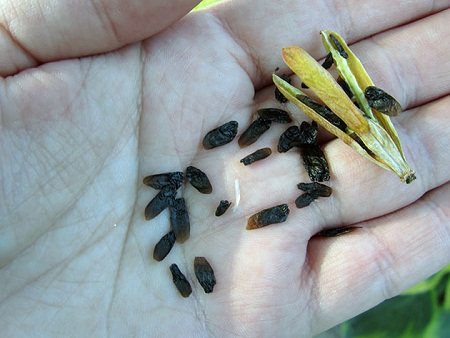

Host breeding is divided into three types: cuttings, bush division and seed propagation.
Cuttings
When grafting, you need to cut off a leaf with a piece of rhizome "heel", plant a hole in the greenhouse and water abundantly. If there is no greenhouse, keep it covered with a bottle until it takes root. It is better to keep the cuttings in the shade and spray, as they are very weak at first.
Dividing the bush
It is better to use this method on plants at least 3.5 years old, so as not to harm them. The plant should be dug up and divided in half, trying to damage the roots as little as possible. It is better to spend it in the spring, if you do it in the fall, then as early as possible so that the plant has time to take root before the weather worsens.
Seed reproduction
When propagating by seeds of a host growing in your garden, you need to wait until the seed pod is tied. You can cut the seed pods when they turn yellow-brown, but it is better to cut them open already. The main thing is to prevent the seeds from getting wet during rain or watering. Seeds must be dried and sown in spring. The soil where the hosts will be sown must be treated with a solution of potassium permanganate. Seedlings appear in about 5 weeks.
When propagated by seeds, plants take on a decorative appearance by the fifth year.
Is it possible to transplant a flowering host
Not all hosts become more attractive during flowering. Basically, these plants are grown as decorative deciduous. Therefore, before transplanting, simply cut off all the flower stalks of the plant: in the new place the host will need strength to adapt, and flowering will only weaken her. Otherwise, the procedure for transplanting flowering hosts is the same as for hosts before or after flowering.
Read also: Brazier from a drive from a truck
Hosta is considered an ornamental type of plant. When to transplant a host? This question is asked by many gardeners who liked the chic shrub. This shade-loving perennial does not have beautiful bright colors. Its advantage is its luxurious foliage. For decorating flower beds, decorating shaded areas of the garden, the plant is simply irreplaceable.
In care, the hosts are unpretentious, have no complaints about the composition of the soil. If you carry out minimal care for the plant, then soon the bush will grow strongly. If not necessary, then touching the plant is not recommended. So it will calmly decorate the site. If the foliage is strongly compacted, the plant is clearly not enough space, then it becomes necessary to transplant the bush.
Shelter for the winter
In the southern regions, hosts winter well without additional shelter. In the northern regions, after mulching, the perennial is recommended to be carefully covered with a suitable non-woven material: burlap, agrofibre, spunbond. Do not use plastic wrap or roofing felt for this. Foliage rotting may begin under them, which will lead to the development of fungal infections and even the death of the hosts.
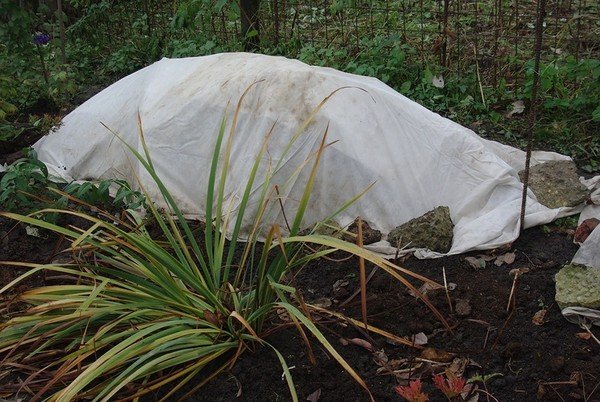

The bushes are covered with non-woven material and pressed along the perimeter with stones or boards
How to transplant a bush to hosts?
Hosta is a plant from the lily family. It blooms modestly, flowers do not differ in brightness and splendor, but foliage is the true wealth of the plant. Due to such splendor of large and dense leaves, hosta is actively used for decorating garden plots. Landscape designers use the plant to decorate flower beds. The flower goes well with annuals and perennials, is beautiful in a composition with small shrubs, it is used as a decoration for a shaded area under trees.
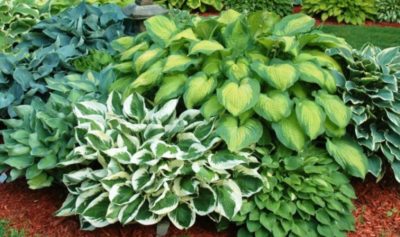

The plant is unpretentious, but certain nuances must be taken into account when transplanting it:
- 1 The flower perfectly tolerates winter cold, so it can be grown in almost any climatic conditions.
- 2 The plant can easily withstand high temperatures, but still feels better in shady corners of the garden. The host should not be exposed to direct sunlight.
- 3 Planting and replanting times may vary depending on the variety. For each type, it is advisable to get expert advice or find information on your own.
Hosts do well in shaded areas, but nevertheless, you need to choose a place in accordance with the needs of the variety. Plants with rich green and blue foliage are best placed under fruit trees. A dense crown will protect the host from the bright sun.
Description and features
A perennial from the Asparagus family was first described by a scientist from Austria and is divided into 4 dozen species, each of which is interesting in its own way. The plant lacks a stem, but there are many roots with which the hosta clings to the ground, rocks and gorges. Long peduncles are formed over a rosette, collected from leaves, separated by stripes, spots, strokes of white, yellow, blue shades.
A perennial is grown in a flowerbed next to peonies, combined with irises and lilies, in the garden - under bushes and trees. Hosta flowers are painted in different tones, there are:
In their place, a capsule full of seeds is formed. The bush will grow up to 0.8 m in height, in dwarf varieties - up to 15–20 cm. Hosta is undemanding to the sun, loves shade and moisture.
Where and how the plant is planted
The host is transplanted from one place to another through seedlings (originally grown from seeds or purchased from specialized stores). Sometimes you have to plant it with adult bushes. Spring is considered the best time. It is in the spring that the root system is actively developing, although the rosettes of the leaves are still closed. It is not forbidden to transplant a flower in the autumn, in this case it is better to do this procedure in the early days of the autumn season. Starting from the second half of September, the host should not be transplanted - the roots of the plant will not be able to take root in the soil.
If the leaves have golden or yellowish tints, then the most suitable place for them will be a place near small bushes, on the side where there is shade at noon. Transplanting the hosta to such a corner of the garden will allow the plant to enjoy a portion of the morning rays, and in the heat of the day it will protect it from strong solar radiation. If there is no place on the site with such conditions, then these varieties are best planted in the shade.
The traditional planting of a plant by transplanting seedlings is carried out in the spring. Amateur gardeners can grow seedlings on their own. Planting material is sold in gardening stores. Young flowers may have a closed root system or open roots.
The first option when transplanting into open ground does not cause trouble. In an acceptable place, it is enough to prepare a hole and place a plant there together with an earthen clod. A flower with open roots is planted in a different way: fertilizers and peat must be placed in a hole in a slide. Spread the roots on the slopes of the slides, sprinkle with earth and compact. Water the earth abundantly.
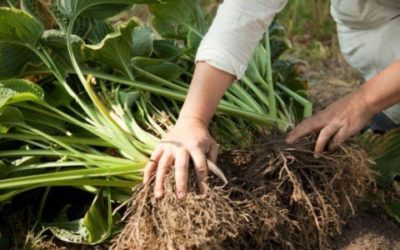

Important: the kidney should remain on the surface, it should not be covered with earth.
Preliminary processing
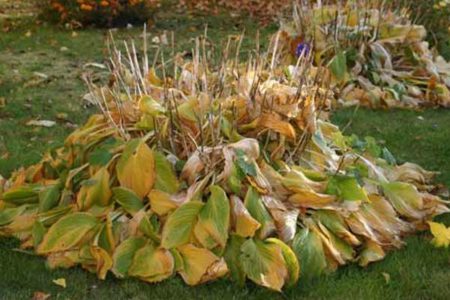

By following the rules of how to prepare your favorite hosts for winter, you can achieve a quick spring awakening. Particular attention should be paid to top dressing, mulching and final watering. In terms of timing, you need to focus on annual forecasts and the average statistical climate, but the general rules for preprocessing are universal.
Watering should be gradually reduced after the month of August. It is advisable to leave only morning moisture in the absence of natural precipitation. If the bush is located on the sunny side, before the onset of cold weather, you need to water it regularly. So the roots can be saturated with moisture, become more flexible and silty. This is useful before the harsh winter. Stop watering only after shelter.
Hostas respond best to complex supplements in the fall, while all stimulants should be excluded.It is optimal to apply fertilizer immediately after watering or rain, in moist soil. In the fall, only the root method of feeding is left, foliar is no longer required, since the leaves do not need to develop during this period. You can use superphosphates and potassium concentrates, 30-40 grams per 1 square meter of soil, dissolve according to the instructions.
In winter, caterpillars and beetles are especially dangerous for the bush. Slugs and snails are practically inactive during this period. You can protect yourself from all these pests by using simple folk remedies. For example, before sheltering, sprinkle the entire area under the crown of the leaves with crushed eggshells. In the spring, this layer will be a source of calcium useful for the hosts. With the awakening of the bush, one of the most dangerous pests is activated - nematodes. It is impossible to destroy them, therefore, even before hiding, you should check the leaves. Finely chop one branch of the hosta, put it in a glass, add water and leave in the light for a couple of hours. After carefully consider: if there are small white worms in the water, the bush must be urgently dug out so that in the spring it does not infect the rest of the plantings.
On a note!
Treatment with strong chemicals as protection against pests before hibernation is undesirable. The bush will be weakened and the parasites are likely to return in the spring.
It is imperative to mulch the hosts before wintering. A mixture of peat, sawdust and dry humus in equal proportions is well suited for this. As a result, you need to get a dense layer with a thickness of at least 1 centimeter. The more severe the frosts and less snow cover, the more mulch is needed. If there are a lot of slugs and snails on the site, you need to add tobacco dust and phytosporin to the mixture. The first will protect from pests, the second from fungi carried by these creatures. In the spring, mulch will become a complete fertilizer.
How to prepare a site
Before you think about how to transplant the host, you need to take care of the preparation of the site. The flower is not capricious to the composition of the soil, it can grow in any of its composition. Although there are also contraindications - the land, which contains a lot of clay, damp, wetlands. The ideal soil is light in composition, which can provide air access to the roots.
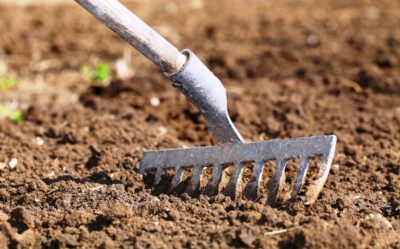

Preparatory work on the site is as follows:
- 1 The earth is very carefully dug up, all roots and weeds must be selected from it. Moreover, if you do this 1 time and carefully, then in the future it will be much easier to care for the plant.
- 2 It is necessary to study the composition of the soil. In heavy and oily soil, humus should be added, light in composition. You can add dry leaves, fine sand, sawdust to the ground. If there is a lot of sand in the soil, then it is necessary to dilute it with peat.
- 3 If the land plot is infertile, then you need to add mineral fertilizers, ash is perfect.
- 4 The roots of the flower are located horizontally in the soil. The hole for planting must be digged with a large width, so the nutrition for the plant will be abundant, which will enhance the splendor of the leaves and their beauty. In terms of moisture, the soil should be moderate.
Preparation of a new site
The land in the garden where the hosta will be grown is freed from weeds. Sandy soil is diluted with peat. Sawdust is introduced into heavy soil, which they managed to overheat. Depleted land is fertilized with ash and trace elements.
To destroy insect larvae, fungal spores, before planting a perennial, the site is watered with a weak solution of potassium permanganate.
The holes for the plant are dug to a depth of 0.4 m and made wide. An interval equal to a meter is left between the bushes of large varieties of perennials, between dwarf species - 30 cm.
Material preparation
Regardless of which species the hosta belongs to, it looks like this: a herbaceous flower with a short rhizome. This plant is shade-tolerant and does not impose special requirements on growing conditions. It is customary to use it in plantings to give decorative groups of plants.Hosta perfectly decorates any garden area. It is no less sophisticated as an independent decoration. Lawns, curbs, flower beds are the places where the amazing herbal flower finds its application.
Shops and garden centers offer their customers plants with bare roots. The host is placed in a bag, sprinkled with peat or sawdust. Planting materials can be sold in pots. But it happens that unscrupulous sellers cut the roots of such plants.
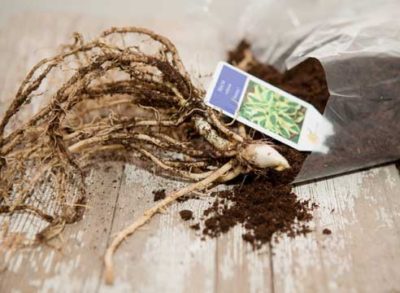

If such material is purchased, then you should remove the flower from the bag, carefully examine the roots. If damaged or rotted threads are noticed, they must be removed immediately.
The options for preparing a plant for transplanting into soil may be different. If the root is purchased in winter - at the beginning of spring and it is not time to transplant it into the soil, then you should place the root dry in a cold place (a container for vegetables in the refrigerator is suitable). Subzero temperature is contraindicated. The storage temperature should not be higher than 5 ° C.
In the case when the bud has begun to grow, and it is too early to plant the plant in the soil, the roots must be soaked in solutions of epin or energin (potassium permanganate is also suitable, but very weak). Then you should plant the plant in a flower pot. The earth must be taken light. It does not need to be watered, the host must receive water from the pallet. As soon as the soil warms up, the flower is transplanted into open ground. In this case, it should be borne in mind that the hosta grown in such conditions is very tender and capricious, even light frosts can destroy it. You can buy a plant just before transplanting it into the ground, then the problems will be solved - it will take root better. The most successful option for growing a full-fledged strong and healthy plant is a transplant in the fall. You can buy material from other gardeners directly from the garden or in nurseries. The plant is immediately planted in its garden in a prepared place.
Read also: How to cook pickled apples at home
For transplanting, a seedling can be asked from neighbors or bought on the market - this option is more economical. The plant in the mini-market of gardeners is sold in the form of "delenok" (part of a bush). If the neighbors gave you the go-ahead to select a bush, then wait until the host looks like a bunch of unopened leaves. Usually for the middle lane this is mid-May. You should dig a bush with a pitchfork. The pitchfork is less likely to damage the root system. The posts must be disassembled by hand. The fragment for transplanting must have at least 2 parts of unopened leaves. For transplanting, wood ash should be at hand. It is sprinkled with the cut places so that they grow better.
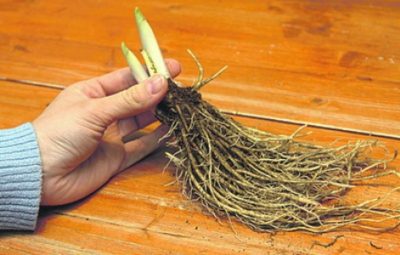

Delenki can be transplanted to the hosta in the fall, then in the next season it will delight with full-fledged colors of the leaves. Can be replanted in spring. In this case, there will be no such beautiful and colorful leaves, but the plant will take root well.
If a hosta already grows on its garden plot, then it can be planted in the above way.
Note to the gardener
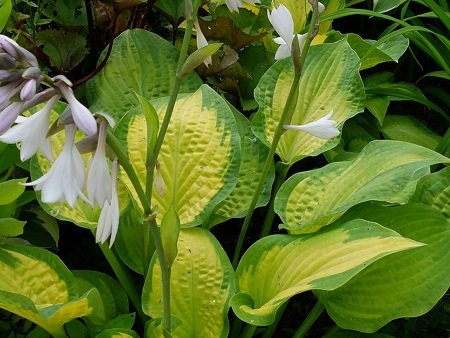

Is it obligatory to prune the hosta leaves for the winter?
While pruning a host is controversial and doubtful, one can calm down. This is not necessary at all. If there is no danger of contracting diseases, then this can not be done. During the winter, the leaves will rot and in the spring it will only be necessary to remove them. However, some gardeners cut the leaves precisely in order not to bother with spring work.
How to save hosts before boarding?
If you bought the hosts a lot in advance and it is too early to land them, then you need to do the following:
- store in the refrigerator at a temperature not higher than 0 and not lower than 4, if the buds of the plant are still dormant, the roots must be dry;
- if the buds have already "woken up", then it is necessary to process the plant and plant it in a pot, and plant it in the garden in the spring.
Transplant rules
The plots should be planted in the ground on the same day they were dug up or bought on the market.Prepare a hole to accommodate the roots of the purchased plant. Do not forget that humus should be placed in the hole. Warm water is poured into the hole, which should be absorbed into the humus. It is necessary to pour at least 1 liter per bush. The roots must be handled with care - spread them out so that they intertwine, and do not penetrate into the depths. Above, a variant of the location of the root system on an earthen mound is described. This is the most common way to transplant hosts.
Hosts are not capricious in terms of providing fertilizers. When planting, they will accept fertilizing with gratitude, delighting the owners with the exuberant flowering of foliage. The usual complex fertilizer, which is purchased at any store for gardeners, will work well. They must be used in accordance with the instructions.
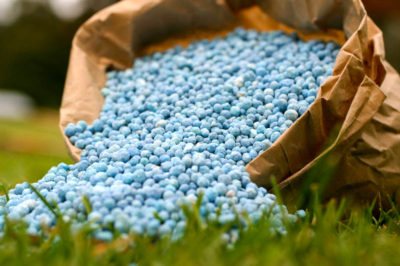

Despite the fact that the hosta loves shady places, she does not tolerate stagnant moisture. If it is necessary to transplant the plant to an area where stagnant water is expected, then provide drainage. To do this, place sand or expanded clay at the bottom of the hole, you can throw in medium-sized gravel or broken brick. In such cases, the hole should be deeper.
Watering is carried out as the soil dries up; after watering, you can pour grass or sawdust under the plant. This mulching will help retain moisture for nutrition.
Young sparse bushes do not look very nice. Therefore, when planning to transplant the host, try to select large bushes. An excellent option would be to transplant several hosta varieties into one place. So the flower garden will look just great.
The skillful combination of the hosta with the surrounding landscape will add sophistication to the garden area. Tall plants or bushes are usually placed in the background. Ornamental shrubs with bright colors, astilbe will be a great backdrop for hosts. If a plant is planted on a curb, then without a bright floral arrangement it will look boring and dull. Any bright flowers are suitable for dilution. It is best to select large plants with colorful flowers. Hosta looks great in combination with almost all garden flowers.
It must be remembered that the host will be able to fully show its decorative qualities no earlier than 4 years after planting. Every year it grows larger, and its leaves are becoming more luxurious. Before dividing the plant and replanting it to new places, you need to let it show itself in all its beauty.
The transplant can be carried out in the fall and spring. It depends on what material to use. If you decide to grow a hosta, then try to immediately find a convenient and correct place. Frequent replanting will weaken the plant. A host can grow in one place for almost 20 years.
Hosta (funkia) is a perennial plant that has earned the love of flower growers for its large ornamental leaves. She does not require too much attention when leaving, but her transplant has a number of nuances. It is important to know how and when you can transfer the host to another location.
How to take care of your host
Growing hosts in the open field
Proper care of the plant is the key to its healthy and attractive appearance. Hosta is a moisture-loving flower, it needs regular watering. With insufficient soil moisture, the leaves will begin to wilt and turn brown. Watering should be frequent, the soil should not be dry.
Important! Water should be watered under the leaves of the bush to avoid sunburn.
To retain moisture, the soil under the bushes is mulched.
To keep the plant healthy, it needs to be split every five years. To do this, at the beginning of spring, when there are still no leaves, the bush is dug up, and cuttings are separated from its root.
In the first year
Caring for the hosta after planting consists in regular loosening and watering (2 times a week). Weeds rarely appear near the hosts, since the flowers are actively growing.In the summer, fertilizers are applied, and in the fall, the bushes are prepared for winter.
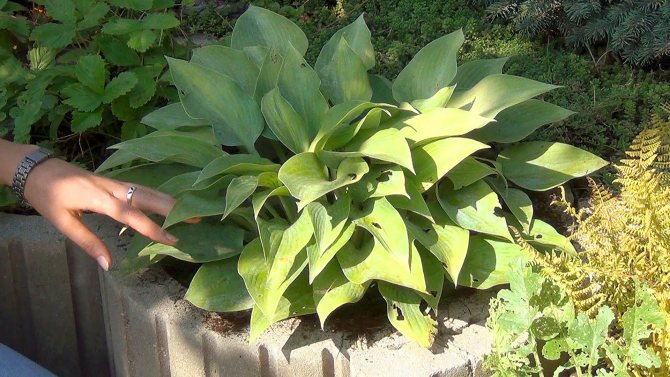

How to take care of your host
Hosta flower care and cultivation in summer
Taking care of the host in the summer consists in watering and applying additional fertilizing.
Watering the bushes is carried out at the beginning of the day. Since plants love moisture, watering should be done regularly. In dry season, increase the volume of irrigation.
During the season, you need to apply fertilizing three times: during growth, during the flowering period and after the plant has faded. Supplements containing nitrogen, potassium and phosphorus are suitable as fertilizers. Compost and humus are introduced in the fall.
Important! Fertilizer should not be applied frequently, as this will result in burns.
Hosts have been growing in one place for more than 20 years. But it is recommended to plant them every five years.
Hosts that grow in the garden need feeding in early spring. During the growth period, they need the following mineral supplements: nitrogen, phosphorus and potassium fertilizers. After fertilizing, the flowers are watered abundantly. Thus, the fertilizer will reach the roots.
Hosta care in the fall
In the fall, before the first frost, pruning is carried out. The procedure consists in trimming the stem with the flower. Leaves should not be touched, they are removed in the spring when they rot. Immediately after flowering, the stem is cut off so that the hosta does not waste energy on ripening the seeds.
For winter, in temperate regions, plants should be covered for the winter. To do this, you should prepare the flower for wintering. Under the leaves, mulch the soil using grass, sawdust and peat. In the spring, all this will rot, and the plant will receive a portion of organic fertilizers. Leaves are not removed during pruning, thanks to this, the bushes will winter better. The paws of coniferous trees are used as a shelter. It is undesirable to cover with various films, because the bushes will not be able to breathe, and the pests take root well under them.
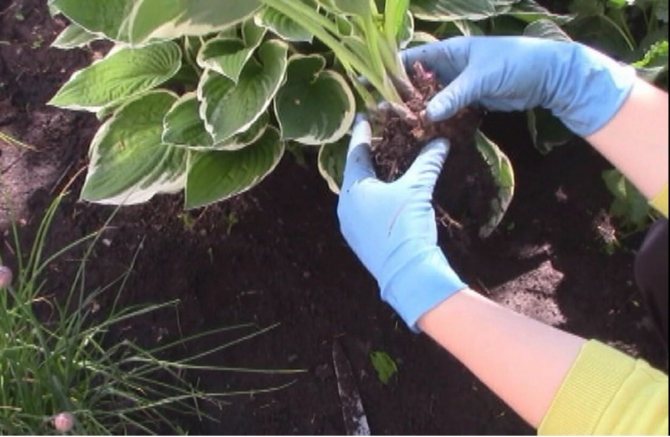

Hosta care in the fall
Transplant reasons
In one place, the plant can be from 15 to 20 years. During the growing period, the flower forms a large shrub with a powerful root system. The host is transplanted for several reasons:
- plant propagation;
- too thickened bush;
- a measure of protection against diseases;
- redevelopment of the garden;
- poorly chosen landing site.
Regardless of the reason for the transplant, you need to know exactly when you can transplant the host from one place to another.
Landing rules
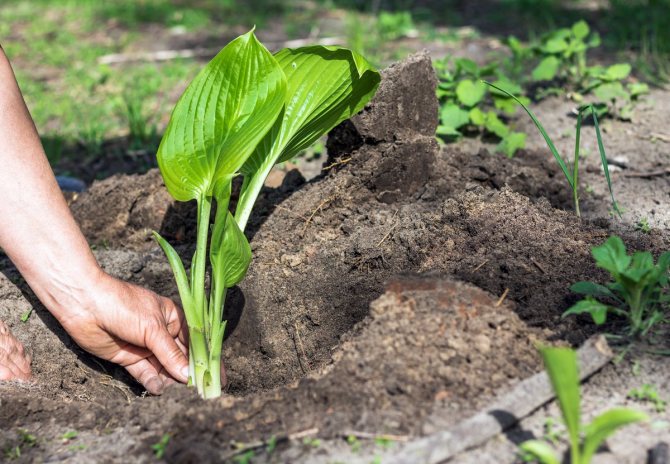

Mulching should not be used for miniature hosts - this can cause overheating of the soil.
They are transplanted to the host in two ways:
- with a bare root system;
- with an earthen lump.
In both cases, the plant must be placed in a hole, the size of which is slightly wider and deeper than the size of its roots.
When transplanting, the plant must be placed so that there are no empty spaces under the earthen lump, and the root collar is at the level with the soil or slightly lower. Then you need to fill the hole with fertile soil, press it against the plant and water everything well. After transplanting, the roots are mulched with peat or humus.
Transplant timing
When is it simply necessary to transfer a host to a new location? In order to avoid strong overgrowth of the bush, it is recommended to transplant it 1 time in 5 or 6 years. Younger plants go through a long period of adaptation, they can stop development for two years.
Important! It is not recommended to divide the plant in the first year, as it may weaken. Khosta has a hard time adapting to a new habitat. It can lose its decorative effect, slow down the growth of foliage.
How to plant the host and when? According to the recommendations from the summer cottage literature, the transplant can be done in spring, summer and autumn. Experienced gardeners advise replanting the bushes at the most favorable time:
- in spring - in the last days of April, until the first half of May.
- in autumn - in the last days of August, until mid-September.
Spring transplanting is not suitable for all plants.The Tokudama, Siebolda variety and their hybrids can be transplanted only in the fall, since their roots do not grow in the spring.
Different varieties of hosts have their own characteristics, as well as the climate of the regions. Even in a separate Moscow region, different areas differ in climatic conditions. When to seat a host in the Moscow region? For central Russia, replanting in the autumn is recommended.
The correct timing of transplanting different varieties can be learned empirically. For Siberia and the Urals, the optimal transplant period is at the end of May.
Site and soil preparation
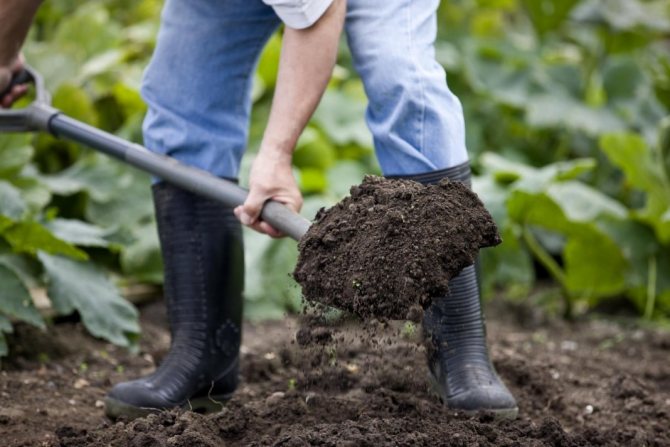

When digging, be sure to remove the weeds.
Before proceeding with transplanting, the site must be dug up to a depth of 30 centimeters and watered. Then dig a hole and pour fertile soil into it. In autumn, fertilizers are not added, since because of them the plant can grow, and it must prepare for winter dormancy.
If you plan to transplant several plants, you should follow these rules:
- place large hosts a meter apart;
- medium - half a meter;
- dwarf - 20 centimeters.
It is advisable to add drainage material: broken brick or pebbles.
Is it possible to transplant a flowering host
Summer transplant hosts, when is the best time to start? If you have experience, you can replant all summer, but it is recommended in the second half of July. For an earlier transplant, you will need planting material with a lump of earth. Before transplanting, the mother plant is well watered.
Read also: Rice in a measuring cup
It is recommended to leave only part of the leaves on the seedlings. This will avoid increased evaporation of moisture and will contribute to a more active growth of the root system. Further transplanting algorithm in summer is the same as in spring. It is necessary to monitor the moisture content of the soil and, at first, shade the young hosts with a shield.
Digging and dividing hosts
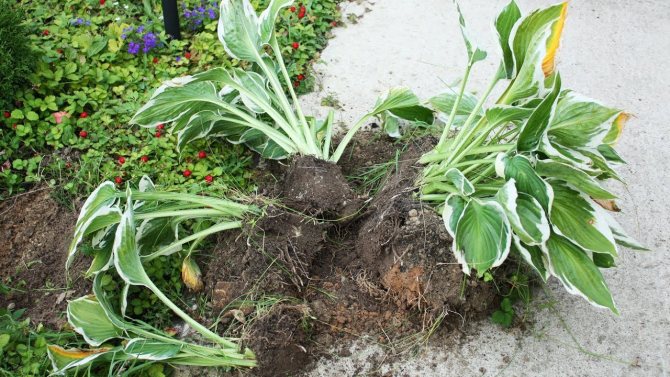

Direct transplantation begins with digging up the plant. This should be done at a distance of 10 centimeters from the stems if the host is small, and 35 centimeters if it is large. When the circle of shrub is cut out, it must be dug under the very root with a shovel and very carefully pulled out of the ground.
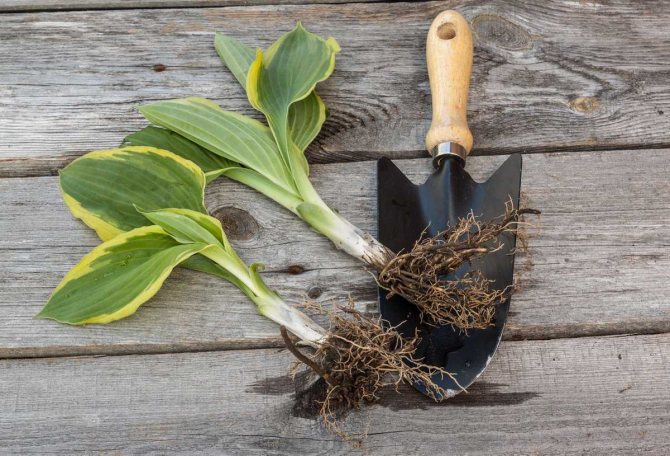

Then you need to remove the soil from the roots and cut the rosettes of the leaves with a sharp knife. Sprinkle the sections with ash or crushed coal.
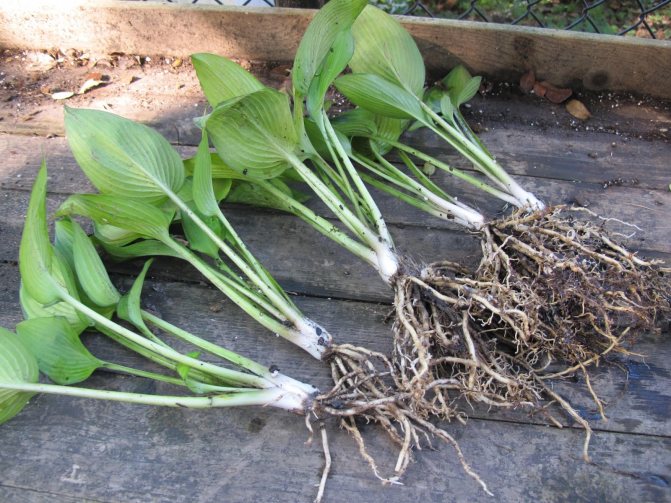

The host needs to be periodically divided and moved due to its strong growth. If this is not done, the leaves will not receive sufficient nourishment and light. In addition, they will crowd each other, the leaves themselves will become smaller, and the host will lose its attractiveness.
How to transplant to host
Transplanting hosts begins with the selection of a place. Since in the wild the plant lives in river floodplains and in wet meadows, a shaded place is better for it. The sun's rays in the first half of the day are quite enough for her. Although the new hybrid varieties do well in bright sunlight.
The correct lighting can be chosen according to the appearance of the plant:
- hosta with green, blue leaves will flower better in partial shade;
- The hosta with yellow, golden, white leaves and variegated color prefers the morning and evening light of the sun.
Hosta with green and white leaves prefers sunlight
The plant grows well in humus loamy soil. Transplanting into sandy soil will result in shrinking and shedding of foliage due to lack of moisture and nutrients. Clay soil retains moisture and provokes hosta root rot. It is recommended to structure the soil by adding sand, peat, rotted sawdust.
Spring transplant
When can hosta be planted in spring? The spring period (late April-early May) is considered the most favorable for replanting hosts. At this time, the leaf cones protrude, the root system grows.A transplant in spring is good because the plant has enough time to grow stronger before the onset of cold weather. They choose a cloudy day and begin the transplant process.
Wells are prepared with a slightly larger diameter than the hosta roots. This is also due to the horizontal orientation of its roots. The depth of the hole is 40 cm. The bottom of the hole must be covered with a layer of drainage (crushed stone, broken brick), and humus should be sprinkled on top. Depending on the size of the plants, the distance between adjacent holes is determined:
- for dwarf ones - 0.2 m;
- for medium - 0.5 m;
- for large - 1 m.
Note! When replanting a whole bush to a new place, you need to dig it up so that the root system is completely covered with earth.
To do this, you need to dig a little ground around the bush. Garden forks are the least root-damaging, they are used as leverage and lift the mother plant along with a large lump of soil. Digging up a powerful bush sometimes requires the help of a second person.
When replanting hosts by dividing the main bush, you need to clear its roots from the ground, inspect for the presence of slugs, and rinse. Then you should remove dry, damaged areas of the roots, prune them with pruning shears to rejuvenate the hosts. It is recommended to keep the plant in a solution of potassium permanganate.
You can divide the main plant into divisions with gentle rotational movements, the accreted parts are separated with a knife. The instrument must be clean and can be wiped with alcohol to rule out any infection. The rhizome is incised and divided by hand. The sections of the cuts must be sprinkled with ash, treated with a fungicide solution. Delenka should be with 1-2 rosettes of leaves, for rapid growth, you can leave 3-4 rosettes. It will be possible to get a fully blossoming bush only next year.
Delenki begin to plant in pits so that the root collars are level with the ground. After sprinkling with soil, it is important to compact the soil well to eliminate air pockets. After all the procedures, it remains for the host to water and mulch with humus.
Advice. To activate the development of the root system, you can water the plants with "Kornevin", "Zircon". Before and after the transplantation procedure, the condition of the plants can be improved by spraying with preparations: "Epin-Extra", "Ecogel-Antistress".
Autumn transplant
Unlike spring planting, in early autumn (from late August to mid-September), fertilizer does not need to be applied to the hole. This is due to the end of the flowering period. A plant that has passed into dormancy after fertilization can return to growth. The rooting period of the plant is a month. Planting material should be chosen very carefully, since the winter hardiness of young hosts depends on it.
After planting, it is recommended to cut off all the leaves so that the stalks remain, 10 to 15 cm long. This will allow the hosta to root better, accumulate nutrients in the rhizome before the winter period. At the same time, you need to take care of the covering material. It must retain heat well, while allowing moisture and air to pass through. Agromaterial will do. To prevent the roots of the seedlings from freezing, mulching is carried out.
When to transplant the host if the autumn transplant time was missed? We must wait for spring. Planting material with clipped foliage can be stored in plastic bags with wet sawdust and soil in the refrigerator or cellar at temperatures from +3 to +5 degrees.
Store with wet sawdust
Hosta varieties and features
The most popular colors are the following:
- Hosta is white-bordered. A type of garden origin, bred in Japan. Plants are medium-sized, without wax plaque, somewhat reminiscent of H. lancifolia. Herbaceous perennial with superficial rhizome and filamentous filamentous roots.Leaves are thin, broadly lanceolate or ovate-elliptical, dark green, with a white border along the edge, leaf blade up to 14 cm long, petioles are large, grooved. Peduncles up to 30 cm tall, straight, thin, with several small leaves. The inflorescence is loose, racemose with a uniform arrangement of flowers. The perianth is funnel-shaped, up to 6 cm long, lilac-violet with darker stripes, strongly bent back lobes with a white border and a dark-colored tube. Blooms in July-August. Bears fruit. In culture since 1830. Has a shape with white flowers.
- Siebold. Homeland - Japan (Honshu Island). Named after a 19th century Dutch botanist. P. Siebold. A plant with dense, broad-heart-shaped ovate leaves with a waxy gray bloom up to 35 cm long and up to 25 cm wide. The flowers are funnel-shaped, 5-6 cm long, pale lilac, almost white. Peduncles up to 40cm tall, leafless or more often with one small leaf. The inflorescence is short, dense, multi-flowered. Blooms in July for 20-25 days. Bears fruit. In culture since the 19th century. Since the Siebold hosta is a polymorphic species, many interesting plant forms are obtained during seed propagation. Its ancient Japanese garden hybrids are widespread in the culture. Especially popular is the Aureomarginata variety, whose leaves have a wide, dark yellow border. Its color becomes more saturated by the middle of summer. Since 1970 it has been cultivated under the name Frances Williams. The name is given in honor of Mrs. F. Williams, the owner of the host nursery in Pennsylvania, who discovered plants with a yellow border among the plants of H. sieboldiana Elegans. Now this variety is multiplied in large numbers in the United States by tissue culture. Elegans is a plant with broad-heart-shaped pointed leaves of a rich blue-gray color. The leaf blade is wrinkled. Inflorescences are multi-flowered. Flowers from pale purple to white. It is easily crossed and used in breeding work, since the seed offspring is distinguished by a variety of traits. It was isolated in 1905 by the famous German breeder G. Arends among hybrid seedlings obtained from the crossing of Host Fortchun and Siebold. 'Herkules' - blue-green leaf, very large, almost thyroid. The height of the bush is 80-100 cm. 'Semperaurea' - purple inflorescences. The leaves are wide, heart-shaped, yellow at first, bright yellow in summer. The bush is round. 40-60 cm.
- Bloated host. Homeland - Northeast China. Plant with broadly ovate-cordate or almost round-cordate, short-pointed, dark green leaves, shiny below, up to 25 cm long and up to 20 cm wide. Peduncles are large, up to 120 cm tall, leafless. The inflorescence is loose, somewhat one-sided. The flowers are lilac, drooping, about 5 cm long. Blooms in July-August. In culture, since 1790. It has varieties and varieties with different colors of leaves and flowers. In the photo of the host, the bloated diff. small (H. ventricosa var. minor). Varieties: 'Aurea-Maculata "- yellow-white funkiya, purple inflorescences. The leaf is wavy, heart-shaped, green with irregularly yellow edges, divided into yellow, creamy yellow and whitish stripes. It is brightly colored only until summer, then gradually turns green. In areas brightly lit by the sun, blue leaves dry up and turn green in the shade. Leaves are sensitive to drops falling from trees or roofs, but not rain. The soil must be moist.
- The lanceolate hosta has green leaves about 17 cm in length, and the width of the plates does not exceed 8 cm.The development of the bush is rapid, and the plant grows up to 40 cm, and the diameter is as much as 60 cm.The leaves are placed in different planes. Peduncles reach 60 cm in height, which the owner can observe at the end of August for two weeks.
- The host is wavy. It is enough to look at the leaves of this hosta to guess why it got such a name. They are oblong, elliptical, rather long - up to 20 cm, and wavy. Coloring can be either plain green or multi-colored, depending on the variety. The homeland of the wavy hosts is Japan. The plant began to grow in culture in the first half of the 19th century.
Recommendations of experienced summer residents
You should not transplant the host to the place where another variety has already grown. This increases the likelihood of diseases, as well as the survival time of the bush.
In order for the bush to have a neat shape and beautiful leaves, young flower arrows need to be broken out for the first few years. After all, most hosts are not grown for flowers, but for ornamental leaves. But this rule does not apply to varieties with white, double flowers (Royal Standard, Fragrant Bouquet, Aphrodite, Summer Fragrance).
Note! The ornamental properties of the host can be enhanced by doing three additional fertilizing during the growing season: in May, June, August. But do not overfeed the host - this provokes a burn of the plant.
Mulching with humus or compost of miniature and dwarf plant varieties can cause the root collar of the hosta to heat up. It is better to use gravel, pebbles, but not under the sun's rays - heated stones can burn the leaves of the dwarf hosta. Pine bark and peat are also not recommended as mulch, as they make the soil acidic. Mulch can become an object of attraction for the main enemies of the hosts - slugs. You can cope with them by introducing mulch from eggshells and shell crumbs.
Important! If a plant infected with a virus is found, it will have to be destroyed by burning. The empty place must be kept in quarantine.
Hosta is so unpretentious in care that even a beginner can safely grow it in the garden. The main thing is to follow the proper care. When creating favorable conditions for growth, a picturesque plant will delight the owner with its beauty for many years.
Common mistakes during the autumn transplant
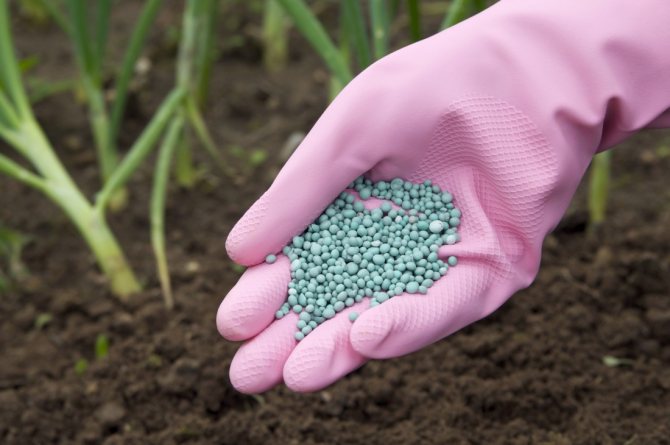

You need to be very responsible about the process, because mistakes can negatively affect the plant.
Gardeners without experience often make the following mistakes:
- fertilizing the planting pit. The nutrient medium activates growth, and the plant must begin preparing for winter;
- the use of roofing material and polyethylene. These materials contribute to the decay of hosts. To cover it, it is worth using spruce branches or branches;
- transplanting weak plants. Experienced gardeners are sure that weakened hosts should be replanted exclusively in the spring. Otherwise, there is a high risk of losing a flower.
Landscape use
An excellent option for growing a host is growing in conditions close to natural conditions, for example, near a pond among other moisture-loving plants.
The hosts look organically against the background of stones, any wooden decor, in the middle of the lawn. Can be planted as a curb along paths. You can also grow hosts in containers, placing them at the entrance to the house.
The perennial hosta belongs to the lily family. The plant gained its popularity thanks to its large and dense leaves. In some species, they are especially decorative. In landscape design, the hosta wins over other representatives of the flora. It goes well with trees and shrubs, annuals and perennials. Hosta belongs to unpretentious varieties, but some issues should be taken into account when planting and transplanting it.
Regional features
Growing hosts in different regions has certain characteristics.
Middle lane
The climatic conditions of the middle lane make it possible to grow flowers without additional shelters for the winter.
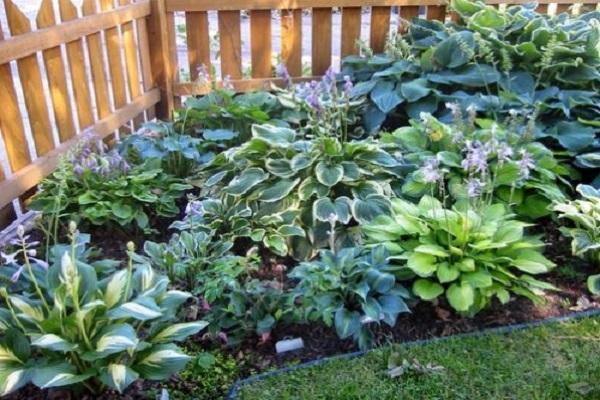

Ural and Siberia
In the Urals and Siberia, the climate is more severe, and therefore it is more difficult to grow flowers. The planted bushes will have to be mulched and covered with foil in the fall.
South of Russia
The southern climate is not suitable for hosts due to possible droughts in summer. Therefore, in the summer, you will have to water the seedlings more often in order to maintain an optimal level of humidity.
Leningrad region
In the Leningrad region, the climate is ideal for growing hosts. The rainy summer promotes the growth and flowering of this plant.
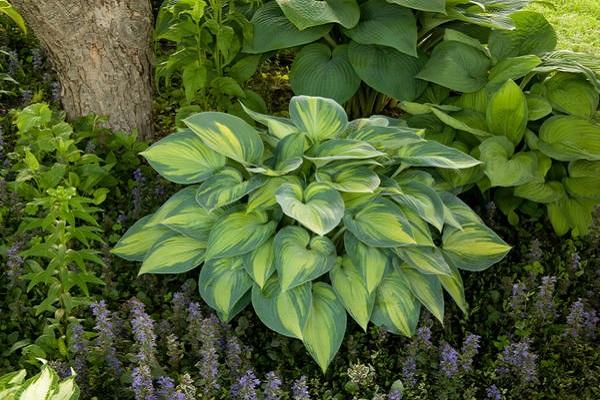

Landing in temporary containers at home
Plants are first grown in temporary pots or boxes.
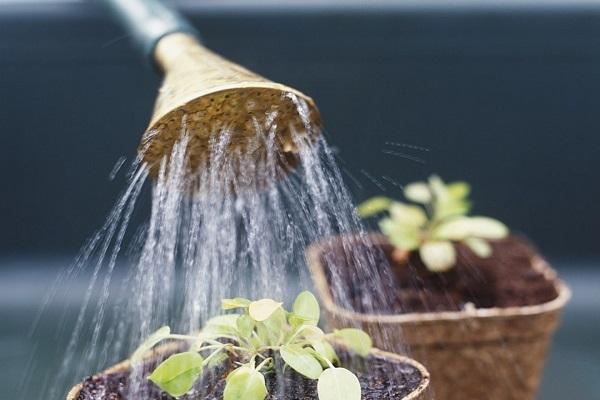

The choice of planting material
In order for the planted seedlings to grow well, it is necessary to choose the right seed. The seedlings should be green and not dry. There should be no yellow spots on their foliage.
Rhizome preparation
Before planting, all the roots must be soaked in a manganese solution in order to disinfect them. For better rooting, they can be soaked in liquids with phytohormones and amino acids.
How to plant
Before planting the hosts, holes are made in the ground with a depth of 5-7 centimeters. Seedlings are carefully planted in them and the rhizome is sprinkled with soil.
Necessary care
Under natural conditions, hosts grow along rivers, i.e. love moist soil and high humidity.
Hosts need regular watering. Pamper the beautiful host with an evening shower - a good result will not keep you waiting.
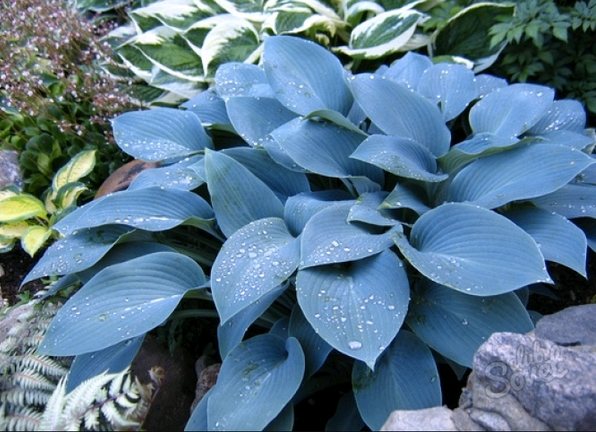

This plant is fed three times per season:
- Spring (beginning of growth);
- When blooming;
- After flowering.
When carrying out dressings, organic fertilizers should be alternated with high-quality mineral dressings.
Regular weeding is necessary in the care. Loosening the soil must be done very carefully. It is recommended to replace it with mulching. After all, mulched soil retains moisture much longer. This option is suitable for weekend summer residents.
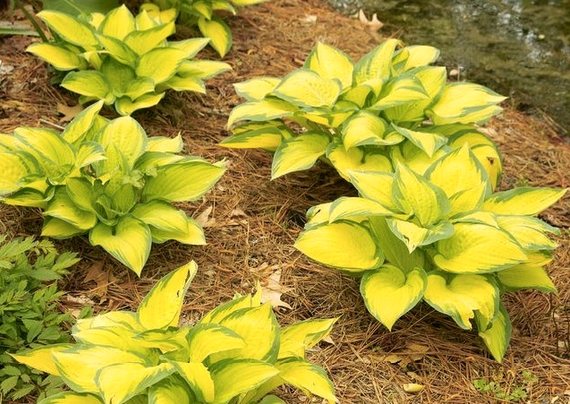

It should be remembered that mulching is not applicable for miniature and dwarf varieties, as it can cause the root collar to heat up.
In addition, mulch is an excellent environment for slugs - the main enemy of beautiful host foliage. Rubble, shell rock, wood chips, which are scattered around the hosta, can help get rid of them, and slugs avoid walking on such surfaces.
Typical mistakes in caring for a host in the fall when preparing for winter
Many gardeners, without thinking about the consequences, are able to commit rash actions that can harm the plant. But the wrong autumn care for the host in the fall can cause quite a lot of damage to the plant.
There are several mistakes that should not be made when caring for a plant in the fall and preparing it for winter:
- Top dressing with nitrogen fertilizers with the onset of autumn
- nitrogen fertilization entails the activation of leaf growth, so the shrub will try to release young leaves, and not prepare to go on winter holidays. - Lack of shelter (mulching) or, on the contrary, the use of special materials for shelter, especially waterproof ones. The thing is that hosts winter well just under a thick layer of mulch.
Thus, taking care of the hosta in the autumn does not present any particular difficulties. To do this, you just need to know the rules for pruning it - cut off only the peduncles at the end of summer, and do not waste your precious time on the autumn pruning of foliage. Much better to do her shelter, or rather mulching.
Video: preparing hosts for winter
Hosta or funkia is an ornamental herbaceous perennial of the Asparagus family. The plant is distinguished by expressive, large and rather dense leaves of various sizes, shapes and colors. It is the high decorative feature of the host foliage, its sophistication and elegance, that is widely used in gardening and landscape design. Hosta goes well with other flowers, shrubs, conifers. This unpretentious shade-tolerant plant can withstand cold weather, summer heat, multiply easily, and is resistant to diseases. In natural conditions, it grows in the Far East, Southeast Asia, Japan.
Hosta in landscape design
A shade-tolerant plant with beautiful leaves helps out in cases when it is necessary to decorate the resting areas in the garden, the entrance to the gazebo. Blooming annuals and perennials look great against the background of lush greenery: bells, primroses, phlox. Varieties with bicolor and tricolor leaves are especially appreciated in landscape design.It is advisable to place such plants singly on the lawns, in small groups along the paths.
It is better to start growing hosts with varieties that have green foliage. They are less demanding in terms of conditions and care, they are easier to tolerate bright lighting and transplantation.
The host is great for mobile landscaping of the entrance to the house, terraces, gazebos. Plants in pots and containers are watered more often because the soil heats up and dries out faster. In the fall, remove old leaves and cover the container. At the beginning of spring, the protective layer is removed, the container is installed against the wall of the house.
Any use of hosts in landscape design should be considered in terms of the conditions that will be created for the plant. With proper care, the "queen" of the shade will not disappoint her fans, she will attract attention with a magnificent view of leaves and bell-shaped flowers.
Planting in open ground with seeds
Sowing hosta seeds is an opportunity to get a lot of seedlings and seedlings for landscaping a large area. The laborious procedure requires certain knowledge and skills. Unfortunately, seed-grown hosts do not always inherit the traits of the parent plant. This is especially true for variegated varieties.
Sowing procedure description:
- Seed propagation is carried out in early spring.
- Use a container, pot, or plastic box for germination.
- Drainage is poured at the bottom, the container is filled with a light fertile substrate.
- Water, spread the seeds, sprinkle on top with a layer of soil 0.5 cm thick.
- Cover with glass or foil, germinate in the shade, at a temperature of 20-23 ° C.
- The soil is often sprayed with water from a spray bottle.
Germination time varies from 7 days to 3 weeks. Usually shoots appear in 2 weeks. Seedlings are dived into other containers, quenched in the fresh air, but protected from direct sunlight. Seedlings develop slowly at first, acquire the characteristics of the variety only after 3-4 years.
When to plant hosta outdoors?
Planting begins in August and ends in September. These dates may shift depending on the weather and location of the region. It is necessary to calculate the planting time so that the hosts take root before frost. With the early onset of cold weather, young plants must be covered.
Most of all, the root zone needs winter shelter, on which brushwood or other suitable material is laid.
The host is divided and planted in the spring, before the leaves bloom. A plant with a root ball, purchased in a store or donated by friends, takes root better. Hosta can be stored briefly in the basement or vegetable section of the refrigerator until planting. They are planted in open ground when the threat of late frosts has passed.
Popular species (varieties)
The taxonomy of the Khosta genus still causes heated debate among botanists, and the description of some species requires clarification. It is believed that the genus has about 30 species and hybrids, but some of them were described by plants introduced into culture, therefore, do not correspond to species from natural habitats. Despite the confusion and the small number of species, gardens and parks conquer more than 2000 registered varieties of this plant.
Hosta species and varieties are usually divided into groups depending on the color of the leaves and size. Most often found in culture:
- Hosta plantaginea. With bright green glossy leaves. Plant height 50 cm, width up to 90 cm. Large white flowers.
- Hosta Siebold (Hosta sieboldiana). The leaves are large, bluish, with well-visible veins. Height up to 60 cm. White flowers.
- Hosta fortunei. The leaves are green with a creamy border. The flowers are pale lilac.
- Curly host (Hosta crispula). With dark green broad leaves and a white border around the edge. Lavender flowers.
- Hosta high (Hosta elata). A large plant that can reach a height of 1 m. The leaves are dark green, glossy, large.The flowers are light lilac.
- Wavy host (Hosta undulata). The main highlight of this species are large leaves with a wavy edge and a white stripe in the middle. Flowers
As a rule, growers do not have any difficulties with growing a host.
If you want to decorate the trunks of old trees, then you should pay attention to the host. Various varieties can be used to brighten and brighten shady areas of the garden.
Plant lifespan
Hosta can grow for about 20 years, while the beauty and decorativeness of the plant only increases with age.
Why doesn't the flower bloom?
Some late blooming hosts in sulfur regions simply do not have time to bloom. If the problem is not in the species, then the location for the flower may have been chosen incorrectly.
Why do the leaves turn yellow (dry)?
Hosta turns yellow, and leaves dry out with insufficient watering, especially when planted in the sun. The leaves curl, and the hosta turns yellow and dries also when affected by various diseases and pests.
Flower care in winter
The host is winter-hardy enough, so it does not require care in the winter. If possible, the area where the hosts grow should be covered with snow.
Hosta is a very interesting shrub. It is distinguished by its peculiar lovely flowers with a strong caramel smell. But its main advantage is its juicy spreading leaves. In addition, the plant grows well without sunlight, so it is often planted under trees or in other shady areas of the garden. An important component of the autumn care of the host, so that in the next season she will again delight you with her spectacular appearance, is her proper preparation for winter, namely pruning and shelter (mulching).
Growing hosts in the garden - diseases and pests
The plant is not very susceptible to disease, but it becomes infected from horticultural crops with phylostictosis (brown spot). A heavily affected hosta must be destroyed, the soil must be disinfected with a fungicide. Against pathogens of fungal and bacterial diseases, they are sprayed with biopesticides.
Slugs gnaw holes in the leaves, they become less decorative. Regular inspection of plants and removal of pests is recommended. If you can't fight, then you can find planting material of resistant varieties in nurseries or flower shops. Slugs prefer soft tissues and are less likely to attack hosts with leathery foliage. Another option for fighting is to mulch the soil around the hosta with fine gravel or crushed shell rock. With good care, the plant remains healthy and attractive for 10 years.
Variety host
About 40 host species are known and many cultivars that amaze the imagination.
- Height (from miniature to the size of a person of average height);
- By color (from soft cream shades to deep green with the presence of yellow, light green, lime, blue shades of different intensities and combinations);
- By the shape of the leaf (lanceolate, round, wavy);
- According to the texture of the sheet (from glossy-smooth to "waffle").
The most popular types of host include: plantain, wavy, white-bordered, straight-leaved, ovate, small, lanceolate, curly, beautiful, Siebold, decorative, tall, swollen.
Breeding features
The most common and affordable way of host breeding is to divide the overgrown bushes.
Bushes are subject to division at the age of 4-6 years. The bush is dug out completely, the soil is shaken off well from the roots. To rejuvenate the hosta, the ends of its roots are slightly trimmed. The rhizome itself is cut with a knife and broken by hand. Fracture points are treated with ash or a fungicide solution, you can sprinkle it with charcoal, cinnamon. The resulting plots are planted in a permanent place with prepared soil.
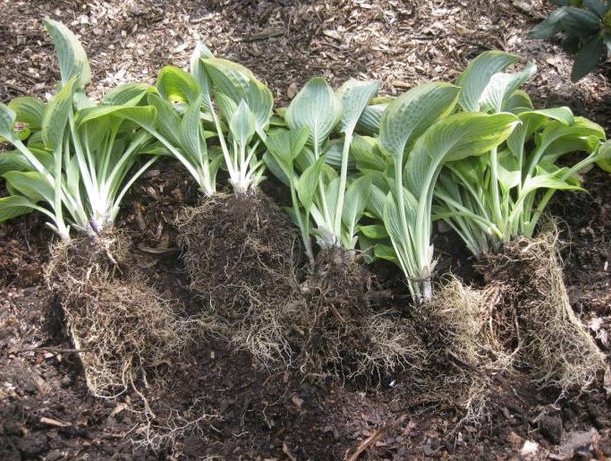

Diseases
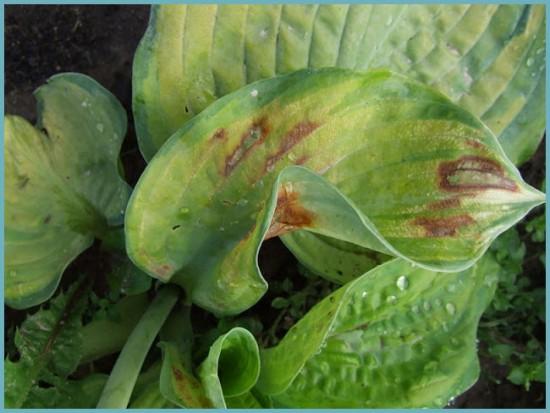

Phylostictosis hosts
The plant suffers from rhizome decay in too waterlogged soil.
In excessively damp conditions, rotting of the tips of the leaves occurs - a sure sign of the defeat of the flower with gray rot, the cause of which is the fungus Botrytis.
All plantings are immediately treated with special preparations against gray rot and the irrigation regime is adjusted in the direction of reducing the abundance of moisture.
Some foreign growers note the appearance of viral diseases on the hosts, manifested in the form of yellow rings or peas, or uneven variegation. The culprits are HVX or X viruses. Affected plants are removed from the site.
Among pests, the greatest problem for hosts is slugs eating young leaves.
They are scared off by the host neighbors, the smell of which the pests do not like - ornamental onions, sage, parsley or garlic.
At the end of July or at the beginning of August, thin brown stripes may appear on the foliage between the longitudinal veins of hosts - in a similar way, the leaf nematode parasitizes on the plates.
DETAILS: Watering cabbage in the open field - rules, schedules and water norms. Basic rules and norms for watering cabbage in the open field
Affected plants cannot be saved, they must be disposed of.
| Name of the disease | Description and methods of struggle |
| Root collar rot | Description: The fungus appears in thickened host plantings on wet and clayey soils. Signs of damage - leaves discolor and die off. Control methods:
|
| Gray rot (Botrytis) | Description: Signs of the presence of a fungus - first, the edges of the leaves rot and later the entire leaf blade. Control methods: Tear off badly damaged leaves, and spray the rest with Cuproxat Champion or Oxyhom |
| Rust | Description: This fungus appears on yellow-bordered host varieties in dry soil. The leaf turns brown and dries up. Control methods: Application of the fungicide to the leaf |
| Anthracnose | Description: This disease manifests itself in hot summers with high temperatures and a lack of fertilizers. A sign of damage is the appearance of red spots on the leaves. Control methods: Treatment of bushes with the systemic fungicide Tilt, Oxykh |
| HVX virus | Description: This virus only infects the host and cannot be treated. Signs of damage - the leaf is deformed, becomes crumpled, chewed, blotches of color appear, uncharacteristic for the variety. Control methods:
|
| Pest name | Description and methods of struggle |
| Slugs and snails | Description: They like to hide in the shade of large, wide host leaves. Right there they feed on stems, young shoots, foliage of these plants. Signs of damage - large holes in the leaves, a shiny trace from the body of slugs. Control methods:
|
| Aphid | Description: A small plant pest that multiplies rapidly. Signs of damage - first, small brown spots appear on the leaves, from which holes are later formed. Control methods:
|
| Mice voles | Description: They can resort to private gardens in the fall from the fields. They hibernate in shelters, sheds. They damage the host roots by gnawing them. Control methods:
|
| Blind rats, moles | Description: A real disaster for gardens and vegetable gardens. Two or three individuals on the site are capable of destroying the entire bulbous flower bed, gnawing and digging the roots of host and other plants. Control methods:
|
Function, like any rhizome plant, is susceptible to various types of rot and fungal diseases:
- A particular danger is phyllosticosis, which is expressed by the appearance of brown spots that grow and interfere with photosynthesis. For prevention, you need to adjust the watering, avoiding stagnant water. The affected bushes are to be destroyed, and the soil must be disinfected.
- Gray rot begins with the appearance of a fluffy gray coating of fungal mycelium. If the disease is not stopped at an early stage, the fungus will begin to grow, causing decay and softening of tissues. The affected parts of the bush are removed and treated with fungicidal solutions or Bordeaux liquid.
- Sclerotinia is a fungus that causes white mold disease. When it appears, parts of the plant become softened and covered with fluffy mold, similar to cotton wool. Damage to the root collar is dangerous for the function. The fungus multiplies at high humidity and low temperatures. Copper-containing preparations, dichloran, fungicides will help to get rid of it.
The main pests of lush Asian foliage are slugs. They are capable of causing severe damage to decorativeness, leaving huge holes in the leaf plates. To get rid of the pest, you can use a prickly mulch from a broken shell, pine needles or set up traps. Pour some beer into a bowl and place in the root zone. After a day, collect the pests. Tobacco dust, lime, red pepper, and the smell of bleach will help scare off slugs.
Stem nematodes gnaw through the passages, forming necrotic spots on the surface of the stem. To detect the pest, which is a tiny worm, place the crushed stem in a transparent container and cover with water. If after an hour nematodes are found in the glass, urgently remove the infected specimen and its neighbors within a radius of two meters.
Caterpillars, beetles, grasshoppers are able to destroy a bush in just a day. Upon detecting their presence, carry out an insecticide treatment.
- Phylosticosis. This fungal disease can be detected by red spots. The problem is spreading rapidly. Caring for the host in the country involves removing the affected parts, and spray the bushes with Vectra or Abiga-Peak.
- Gray rot. First, rotting of the tips of the leaves is observed, and then, the lesion spreads to the entire plate. You can fight the disease with Bordeaux liquid.
- Rot of the root collar. With an excess of moisture, the roots begin to rot. The affected plant must be dug up, the roots must be rinsed and the problem parts must be removed, and then, treated in a weak solution of potassium permanganate and planted in another place.
- Slugs. The parasites infect the leaves, which leave traces of dried mucus and small holes. It is difficult to deal with them, so put the "Thunderstorm" bait under the plant and cover the host with plywood for the night. Collect the slugs in the morning.
- Deciduous nematodes. The parasites multiply rapidly and leave light brown stripes on the leaves. The contaminated areas must be removed and the soil must be disinfected using a formalin solution.
An important aspect in the matter of planting and caring for hosts in the open field is the fight against diseases and pests. The most common problems are:
- Phylostictosis is a fungal infection.It manifests itself in the form of spots on the leaves of a brown color. Damaged foliage should be destroyed as soon as possible and the plant should be sprayed with special preparations.
- Botrytis. With this disease, the leaves quickly dry out and fall off. It is possible to cope with it only with the help of chemicals.
- Damage by garden slugs. These insects are considered the main host pests. To combat them, drugs are also used. In addition, slugs can be hand-picked and destroyed.
With proper care, the host will grow and develop rapidly. It will be a wonderful decoration for any garden.
Fertilizing and fertilizing a flower
The host needs additional feeding, especially organic fertilizers. It is possible to feed the plant in 2 ways:
- Foliar;
- Root.
The most common and easiest way is to apply fertilizer at the root after watering. Thus, it is recommended to feed the plant with mullein infusion 2 times a year: in spring and summer. Mineral fertilizer granules can simply be embedded in the ground around the plant.
Advice
! The soil around the plant should be mulched with compost. This will retain moisture and provide essential nutrients.
Foliar dressing is carried out with water-soluble mineral fertilizers. The leaves are sprayed with water with a low concentration of fertilizers.
Advice
! Do not overuse dressings in the second half of summer, since the rapid development of plants does not allow them to prepare for winter in time.
The host practically does not need pruning.
Pruning methods
Pruning for the winter
Opinions about the need for autumn pruning are controversial. Some growers are advised to completely cut the leaves for the winter, others - to leave the plant as it is.
The leaves of the host are soft and in most cases in the spring there will be no trace of them, and the nutrients after their decomposition will fertilize the earth. At the same time, pathogens and pests can remain on the leaves. Therefore, it is up to each gardener to decide whether to prune or not.
Food for thought
! It is believed that in the fall, the rhizome draws all the nutrients from the leaves, so pruning too early will deplete the plant.
Gardener mistakes when transplanting hosts in the fall
Novice summer residents make a number of mistakes that negatively affect the plant.
• After the autumn transplant, the hosts should not be fertilized. At this time of the year, the plant is preparing for winter, and does not begin to actively develop. It is better to postpone all feeding of the shrub until spring.
• The covering material must retain heat, allow air and moisture to pass through. These qualities affect the safety of the perennial.
• If the plant is too weak, it is better to postpone the transplant until spring. Hosts do not tolerate any interference, especially in the fall.
Flowering hosts
The flowers of the hosta are very attractive, although they are not considered the main advantage of the plant.
When the plant blooms, the flower shape
The hosts bloom in June-August, depending on the type of plant. Flowers last 20-40 days. Lanceolate and plantain hosts can bloom in August-September.
Hosta flowers are large enough, up to 13 cm (depending on the species), bell-shaped, collected in inflorescences at the top of a long peduncle. The color depends on the species and can be white, lilac or purple.
Interesting
! Host varieties with fragrant flowers were bred.
Most often, the plant is affected by the following pests:
- Deciduous nematode;
- Snails;
- Slugs.
Common diseases include:
- fungal disease phylostictosis;
- anthracnose;
- rust;
- virus host.


